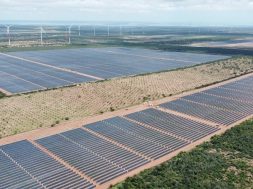
Clean energy player Avaada Power plans to invest ₹25,000 crore in the sector and develop 5,000 MW capacity in largely solar and wind projects in the next four years, a senior company executive has said.
“In the next four years, we will make ₹25,000 crore investments into the clean energy sector. The money will go into solar, wind, EPC, and rooftop, and we are going aggressively into the rooftop segment. We are also going into energy solutions,” Vineet Mittal, chairman of Avaada, told ET in an interaction.
Mittal was formerly the co-founder of Welspun Energy, which sold its entire renewable portfolio of 1,140 MW to Tata Power Renewable Energy in 2016, kicking off a streak of merger and acquisition activity in India’s renewable energy sector. Mittal declined to comment on any future acquisition plans for Avaada.
“Before December (this year), we will have 1,000 MW operational capacity, and our gameplan is we want to do 1,000-1,500 MW every year,” he said.
He said that if the group manages the 5 GW target in four years, it will demonstrate the company’s capability to global investors. Avaada is also looking at projects in South Asia and Africa as part of its overseas operations.
Talking about India’s renewable energy sector, Mittal opposed trade barriers such as anti-dumping and safeguard duties on solar imports as it would lead to increased cost of power to the consumers.
“We want local manufacturing to grow but not at the cost of increasing cost of power to the consumer, because I am more accountable to my consumer,” said Mittal, who is also president of Solar Power Developers Association.
He suggested that the government should provide incentives such as upfront capital subsidy, interest subvention to domestic solar manufacturers to create a level-playing field with global giants in the segment.
Mittal pointed out that the government needs to provide clarity on issues relating to the renewable energy sector to achieve its target of 175 GW installed renewable energy capacity by 2022. He said that the government needs to conduct reverse auctions in the right way because that is creating a ‘gambling habit’ among developers which has led to solar and wind tariffs hitting rock bottom.
“If you have to think 175 GW by 2022, it’s time that feed-in-tariff (FiT) comes back because the prices that have been discovered-…they are not going to drop drastically over the next three years to achieve the larger goal set out by the PM,” he explained.
















